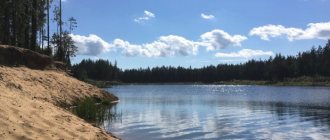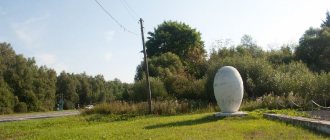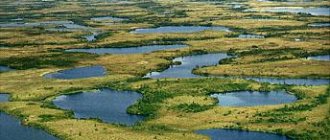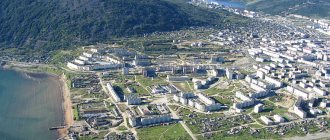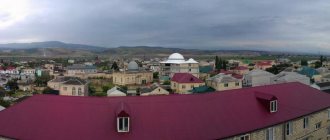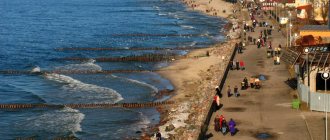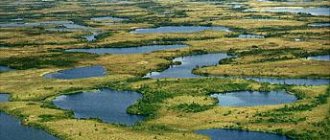ARKHANGELSK REGION, subject of Russia. Federation. Located in the north of Europe. parts of Russia. It is washed by the White, Barents and Kara seas. Includes the islands of the Arctic Ocean: Novaya Zemlya, Franz Josef Land, Solovetsky, etc. Included in the North-West. Federal District. As part of A. o. – subject of the Russian Federation Nenets Autonomous Okrug. Pl. 587.4 thousand km2 (without the Nenets Autonomous Okrug - 410.7 thousand km2), including the area of sea islands 104.4 thousand km2. Us. 1304.5 thousand people (2005; 961 thousand people in 1926; 1267.3 thousand people in 1959; 1570.3 thousand people in 1989). Adm. center - Arkhangelsk. Adm.-terr. division: 21 districts, 14 cities, 31 villages. mountains type.
Government departments
System of government bodies authorities are determined by the Charter of the Arkhangelsk Region. (1995). State power in A. o. carried out by the Arkhangelsk Regional Assembly of Deputies, the head of the administration and the regional administration, and other state bodies. authorities formed in accordance with the Charter of the region.
The Arkhangelsk Regional Assembly of Deputies is the highest legislative (representative) body of the state. regional authorities; consists of 62 deputies elected for 4 years. The number of deputies of the regional Assembly carrying out their activities on the prof. on a permanent basis, established by the regional Assembly. The regional administration is the highest executive. state body regional authorities. It is formed and headed by the head of the administration, vested with powers by the regional Assembly on the proposal of the President of the Russian Federation.
Weather
The weather in the Arkhangelsk region is not a strong point of the region. A temperate continental climate prevails over most of the territory. The northwestern part of the region has a maritime climate. Subarctic air masses predominate in the northeast. Winter in the Arkhangelsk region is long and moderately cold. Summer, on the contrary, is short and cool. In January, the average temperature is -12°C in the western part of the region, -18°C in the eastern part. In July, the average temperature varies from +8°C to +16°C.
There have been cases when residents of the regions of the Arkhangelsk region could observe snow in the summer months.
Nature
Photo by I. G. Nagaev The White Sea coast in the Arkhangelsk region.
A. o. located in the northeast of the East European Plain. To the center. and south In parts, the relief of an undulating plain with individual plateau-like hills (Konoshskaya, Nyandoma, etc.) prevails. In the north-west parts - the low-mountain ridge Vetreny Poyas, in the northern - Kanin Kamen. To the northeast of the Timan Ridge (the highest point is the Chetlassky Kamen hill, 471 m) to the low-mountain ridge Pai-Khoi, the vast and swampy Pechora Lowland stretches with the Bolshezemelskaya and Malozemelskaya tundras; to the center. parts are rows of high (approx. 250 m) moraine ridges. In the area between the Onega and Sev. Karst is developed on the Dvina River, as well as on the White Sea-Kuloi Plateau. There are known deposits of oil, gas, diamonds (Arkhangelsk diamondiferous region), bauxite, peat, and building materials. There are mineral outputs. sources.
Photo by M.V. Glazov Archipelago Novaya Zemlya. South Island, Gribovaya Bay.
The climate is temperate continental, in the northeast it is subarctic. The weather is extremely unstable. Cold winter. Wed. temperatures in January are from –12 to –18 °C, in July from 16 °C in the south to 8–10 °C in the north. Summer is short and cool. The growing season ranges from 50–60 days in the north to 150–155 days in the south. Precipitation is from 300 to 500 mm per year. On the coast of Belyi Cape there are frequent fogs (up to 60 days a year). Permafrost is widespread in the northeast. The region has a dense network of rivers and lakes. All rivers (except Ilexa) belong to the Arctic Ocean basin; the largest are the Northern Dvina (with tributaries Vychegda, Pinega and Vaga), Onega, Mezen and Pechora. OK. 2.5 thousand lakes, ch. arr. in the Onega basin and in the extreme northeast; the largest are Lacha, Kenozero and Kozhozero.
North-East Part of the region belongs to the tundra zone, to the moss-lichen and shrub subzones on tundra-gley and tundra-bog soils. To the south, the forest-tundra zone is represented by a combination of tundra areas on peat-gley soils and open forests on slightly podzolic soils. Means. forest resources; OK. 53% of the territory is occupied by taiga forests, sometimes swampy, belonging to the northern. and Wed subzone of the European taiga. Basic forest-forming species: spruce, pine, in the east. parts - larch with an admixture of fir. Soils under forests are predominant. podzolic-gley, peat-bog and podzolic-bog. Among the animals, the arctic fox is of commercial importance. Reindeer, brown bear, elk, white hare, and fox live here; Birds include ptarmigan and tundra partridge, hazel grouse, black grouse, capercaillie, etc. On the territory of A. o. – Vodlozersky national park (partially), Kenozersky national park park and Pinega nature reserve.
Natural conditions for the life of the population in the tundra and forest-tundra are unfavorable, and in the taiga - unfavorable. Ecological the situation is relatively favorable in the inaccessible southeast. areas, acute - in industrial areas. centers Zones of general contamination of territories have formed around the cities of Arkhangelsk, Severodvinsk, Koryazhma, Novodvinsk, etc. In the Onega-Dvina interfluve, indigenous taiga forests have been practically destroyed. A potential source of environmental dangers are Center. a training ground on the Novaya Zemlya archipelago, the Plesetsk cosmodrome, enterprises of the military-industrial complex in Severodvinsk.
Flora and fauna
The Arkhangelsk region is almost entirely located in the natural taiga zone (of course, with the exception of archipelagos in the seas of the Arctic Ocean and the northernmost territories). The forests are mostly spruce; there are a large number of mushrooms and berries, which are most common in the southern part of the region. Quite a lot of plants that are listed in the Red Book grow in the region. You can read more in the article “Plants of the Arkhangelsk Region”.
The fauna of the Arkhangelsk region is typical for these latitudes. These are bears, deer, walruses, seals, seals, seals, moose, wolves, foxes, hares, lynxes, wolverines, beavers, minks, martens and other animals. There are more than 300 species of birds. You can read more in the article “Animals of the Arkhangelsk Region”.
Population
B. h. population of A. o. (2002, census) are Russians (94.2%, including Pomors - 0.4%); Nenets - 0.6%, Komi - 0.4%, also Ukrainians (2%), Belarusians (0.7%). Characteristic of natural population decline: mortality (17.5 per 1000 inhabitants in 2004) exceeds the birth rate (11.0 per 1000 inhabitants). Infant mortality rate 12.4 per 1000 live births (2003). The share of women is 53%. The share of the population under working age (up to 16 years) is 17.8%, over working age – 18.3%. Wed. life expectancy is 62.1 years (men - 55.6, women - 69.9). It means marked. migrant outflow (40 per 10 thousand inhabitants), the peak of which occurred in 1998–99.
Wed. density of us. 2.2 people/km2. Most of the population is concentrated near the sea coast and river valleys, areas of logging and wood processing, and mining. The most densely populated areas are Velsky, Nyandoma, Kotlas and Konosha districts. Gor. us. 74.5% (52.6% in 1959; 73.4% in 1989); basic Some of the townspeople (2005; thousand people) are concentrated in Arkhangelsk (357.7) and its satellite cities - Severodvinsk (199.3) and Novodvinsk (42.9). Dr. large cities - Kotlas (59.6 thousand people), Koryazhma (42.8 thousand people).
Population dynamics in the region
Since 1991 there has been a constant decline. So, if in 1991 the population of the Arkhangelsk region was 1.5 million people, now there are only 1.1 million. The decrease in numbers is due to the mechanical movement of citizens of the region to other regions of Russia. Migration growth is negative, since more people leave a given territory than come here. Every year there are 8.1 newcomers per 1,000 inhabitants. Many lands are falling into desolation.
This has become a serious problem nowadays and many scientists and social scientists are seriously concerned. The fact is that there is no investment in the region, as in many parts of northern Russia. Production, accordingly, is not developing. The problem of kindergartens in the region is also acute. Almost 20 thousand children are on the waiting list for preschool institutions.
In addition, with current salaries in the region, almost no one can afford to buy an apartment. The affordability of housing, despite the programs being adopted, is out of the question.
The birth rate in the region has declined in recent years and is 12.6 babies per 1,000 people. The figures for 2012 are higher – 12.8.
The mortality rate is higher than the birth rate, its value is 13.2 per 1,000 people. Thus, the natural decline is 0.6.
Life expectancy has been steadily increasing since 2004. Now it is 70.2 years. However, life expectancy for indigenous residents of the Northern regions remains low.
Historical sketch
Stone ax-hammer with a bear's head on the butt. 2nd millennium BC e. Historical Museum (Moscow).
The most ancient monuments on the territory of A. o. are represented by individual Paleolithic finds in the North. Dvina (Stupino, Ichkovo) and sites in the Pechora basin, near the Arctic Circle. The Mesolithic era (9th–4th millennium BC) includes sites (Yavronga 1, Nizhneye Veretye 1, etc.) and a ground burial ground (Popovo). During the Neolithic, Bronze and Early Iron Ages (4th millennium BC – 1st millennium AD), hunters and fishermen continued to live here, and marine fishing was developed on the sea coast (White Sea culture). The Neolithic is represented by the Kargopol culture in the south of the Autonomous Region, and the Pechora-Dvina culture in the north. At the sites, molded ceramics with comb, pit-comb, and comb-toothed ornamentation, flint and bone tools were found, stone axes (Fig.), flint figurines of animals and people, clay figurines of birds, etc.; Burials face down are known at burial grounds (Kubenino, Nizhneye Veretye, Orletsy, Nizhnyaya Zolotitsa, etc.). There are finds of bronze celtic axes (Petrominsk). Some of the monuments of the Early Iron Age belong to the White Sea variant of the Ananino culture. The complex of sanctuaries of the Solovetsky Islands is associated with the ancestors of the Sami.
Solovetsky Monastery. Photo by A. I. Nagaev
In the river basin Vaga is known for burial grounds of the 10th–13th centuries. Vym culture, on Vaga and Koksheng - refuge settlements, probably of the same time. By the time the Slavs conquered the territory of A. o. include slav. burial mounds with burials according to the ritual of corpse burning (10th–12th centuries). At the mouth of the North. An 11th-century treasure containing Arabic (Kufic) and Western European treasures was found in Dvina. coins. In the 12th–13th centuries. territory of modern A. o. became part of the Novgorod Republic, the Rostov Principality and the Belozersky Principality. By the 12th century refers to the foundation of the Mikhailo-Arkhangelsk monastery. in the lower reaches of the North. Dvina. In the 14th–15th centuries. to the North In the Dvina and Vaga rivers there were fortified estates of the Novgorod boyars (Orletsy, Pinezhsky town, etc.), forts with settlements arose (Kargopol, Shenkursk), and the Solovetsky Monastery was founded. After entering the territory of modern A. o. at the end of the 15th century. Pustozersk, Kholmogory, etc. were built into the Russian state, and the Anthony-Siysky Monastery was founded.
Farms played an important role in the development of the region. the activities of the Solovetsky Monastery, which was its spiritual, cultural and economic. center, and in the 16th–18th centuries. - a key link in the defense of all Rus. North. Thanks to the Pomors, marine fishing became widespread. In the 1550s, after the “discovery” of English. merchant sailors (R. Chancellor and others) on the way from the West. Europe to the mouth of the river. North Dvina, founded by English. and gol. trading posts moved in the 1580s. to New Port (now Arkhangelsk). During the Time of Troubles on the territory of modern A. o. individual Swedes acted. and Polish-Lithuanian. squads. In the 17th century the region was a major transshipment center for trade. An important event in the history of the region was the Solovetsky Uprising of 1667–76, caused by a split in the Russian Orthodox Church. In 1708–80 and 1784–1929 the territory of modern. A. o. was part of the Arkhangelsk province (until 1780 Arkhangelsk), in 1780–84 – the Vologda governorate (under the name Arkhangelsk region), in 1929–36 – the Northern Territory, in 1936–37 – the Northern region. On September 23, 1937, when the latter was divided, the Arkhangelsk region was formed.
a brief description of
It was created on September 23, 1937, then the Northern Region of the USSR was divided into parts, which in turn was created just one year earlier. The center of the Arkhangelsk region is the city of Arkhangelsk, where 31% of the region’s population lives. The second most populous city is the city of Severodvinsk, where 186 thousand people live, or 16% of the region’s population. Thus, 47% of people in the Arkhangelsk region live in two cities.
The region also includes the Nenets Autonomous Okrug, which is at the same time a separate subject of Russia and has its own authorities.
The region is rich in minerals, water and natural resources. There are industries in the military-industrial complex of strategic importance, but in general the region’s economy is rather poorly developed, which is explained by poor infrastructure and climatic conditions.
The tourism infrastructure is also not well developed, although the region has very great potential in this regard. Pilgrimage and ecological tourism are most developed in the Arkhangelsk region: there are many beautiful and extensive national parks. Fishermen and hunters from other regions love these places.
Farm
A. o. - one of the industrial regions of the Northern economic. district; industrial volume The cost of production is almost 14 times higher than the volume of agricultural production. products. In the country's economy, it stands out for its developed forestry complex (about 33% of Russian pulp production, 26% of cardboard, 9.7% of lumber, 9% of commercial timber and paper each), shipbuilding and the fishing industry. In the structure of GRP (%, 2003): industry - 39.4, trade - 12.3, transport - 11.4, construction - 10.1, p. x-in – 2.1, communication – 1.3. The ratio of enterprises by type of ownership (by number of organizations;%): private – 66.5, state. and municipal – 17.1, societies. and religious organizations (associations) – 9.8, other forms of ownership – 6.5%.
Economically active us. 763 thousand people, 82% are employed in the economy. Sectoral structure of employment (%): industry 26.7, trade and society. food 14.5, education 10.6, transport 9.4, healthcare 7.8, housing and communal services 6.0, p. agriculture 5.2, construction 4.9, etc. The unemployment rate is 9.9%. Cash income per capita of A. o. – 6.01 thousand rubles. per month (approx. 95% of the Russian average); OK. 30% of us. has income below the subsistence level.
Industry. Industrial volume products 106185 million rubles. (2004). Industry structure of industry production (%): forestry, woodworking and pulp and paper industries 39, fuel - 25, mechanical engineering and metalworking - 19.3, electric power - 8.5, food - 4.8.
Deposits of bauxite (Iksinskoye in the Plesetsk region, etc.), diamonds (named after Lomonosov, 90 km north of Arkhangelsk), oil and gas (Prirazlomnoye) have been explored and exploited. A. o. energy deficient. More than 90% of primary energy resources are imported from other regions, approx. 8% comes from local fuels: firewood, pulp and paper and forest chemical waste. industry, peat (peat briquette plants in Solvychegodsk and Shenkursk). The largest thermal power plants operate in Arkhangelsk, Severodvinsk and Kotlas. In a number of areas of decentralized power supply (mainly in the north), electricity is generated by diesel power plants.
Forest skidding. Photo by M. V. Glazov
A. o. – one of the largest suppliers of timber industry products in the Russian Federation (has a completed production cycle, including logging, woodworking, pulp and paper industries and plywood production). Among the constituent entities of the Russian Federation, the region occupies one of the leading places in the production of lumber, industrial wood, cellulose, cardboard, and paper (Table 1). Basic a timber industry region is an area that gravitates towards the railway. d. Arkhangelsk - Vologda. The largest wood processing enterprises are located in the tundra zone, at the confluence of rivers into the sea, next to the ports for the export of timber. The largest timber processing centers: Arkhangelsk, Novodvinsk, Kotlas and Koryazhma. Chemical Wood processing is carried out by the Arkhangelsk, Kotlas, Solombala pulp and paper mills, as well as the Arkhangelsk and Onega hydrolysis plants. The second largest branch of specialization of the A. o. industry. – shipbuilding (including nuclear submarines, icebreakers). Basic centers for the production and repair of large ships - Severodvinsk (including military ones), Arkhangelsk and Kotlas. On the territory of the region there are State. grew up nuclear shipbuilding center (Severodvinsk; includes the enterprises Sevmash, Zvezdochka, etc.) and the State. will be tested Cosmodrome "Plesetsk" (Mirny). Production of road machines (Sevdormash, Severodvinsk) and equipment for the forestry industry (Solombala Machine-Building Plant, Arkhangelsk). The fishing industry also stands out (over 50% of all food industry products in the region). The annual fish catch is approx. 200 thousand tons (fishing for cod, halibut, haddock, perch, navaga, herring and salmon); More than 120 thousand tons of food fish products and canned food are produced. The number of enterprises in the industry is concentrated in Arkhangelsk; the largest of them is the Arkhangelsk Trawling Fleet Base (75–80% of the catch, about 70% of food fish products). Algae fishing is carried out mainly. in the area of the Solovetsky Islands and about. Zhizhginsky (up to 2000 tons of algae per year; “Arkhangelsk Experimental Algae Plant”). Diamond cutting enterprises (in Koryazhma and Severodvinsk), clothing factories, manufacturing of shoes from natural leather and fur. Ch. prom. centers: Arkhangelsk, Severodvinsk, Novodvinsk, Koryazhma, Onega.
Table 1. Production of the most important types of industrial products
| Products | 1985 | 1990 | 1995 | 2000 | 2003 |
| Electricity, billion kWh | 7 | 7,9 | 5,9 | 5,7 | 6,6 |
| Oil, including gas condensate, million tons | 0 | 1,2 | 2,7 | 4,5 | 7,4 |
| Commercial timber, million dense m3 | 22,8 | 21,6 | 8,3 | 9,1 | 8,4 |
| Lumber, million m3 | 5,8 | 5 | 1,8 | 2 | 1,9 |
| Glued plywood, thousand m3 | 50,3 | 50,4 | 25,4 | 47,1 | 72,3 |
| Fiberboards, million conventional m2 | 20,3 | 22,4 | 13,5 | 18,1 | 18,8 |
| Cellulose (by cooking), million tons | 2,1 | 2,2 | 1,3 | 1,7 | 1,9 |
| Paper, thousand tons | 374 | 397 | 211 | 297 | 333,4 |
| Cardboard, thousand tons | 602 | 628 | 400 | 620 | 705,3 |
| Fish catch and production of other seafood, thousand tons | 336 | 261 | 133 | 198 | 120 |
The products of the timber industry (cellulose, lumber, cardboard, paper) provide approx. 3/4 of the export volume of A. o.; They also export crude oil and shipbuilding products. Imports are dominated by mechanical engineering products (forestry equipment, equipment for the electric power industry, etc.).
Agriculture. Cost of gross output c. holdings 5867.1 million rubles. (2004). In value terms, crop production predominates (56%). Agricultural area land 583.4 thousand hectares (including 46% arable land). A. o. located in a risky farming zone. All in. basic conditions agricultural crops are potatoes and vegetables. Crop production is focused on producing products to meet the needs of the region (Table 2). Ch. agricultural The district is located in the south of the region.
Table 2. Production of main agricultural crops, thousand tons
| 1985 | 1990 | 1995 | 2000 | 2003 | |
| Corn | 105,4 | 98,7 | 42 | 10,6 | 4,5* |
| Potato | 209 | 167 | 434,5 | 460 | 325,7 |
| Vegetables | 32,6 | 27,4 | 72 | 89,6 | 93,6 |
* 2004.
Photo by I. G. Nagaev Grazing near Kholmogory.
The leading branch of livestock farming is dairy and beef cattle breeding (highly productive Kholmogory breed); They also raise pigs, sheep and goats (Table 3), poultry, and deer (in the north). Livestock breeding. Fur farming (Arctic fox, mink); marine hunting.
Table 3. Livestock, thousand heads
| 1985 | 1990 | 1995 | 2000 | 2004 | |
| Cattle | 356,4 | 354,7 | 232,5 | 128,2 | 79,3 |
| Pigs | 133,1 | 176,2 | 77,5 | 26,6 | 23,8 |
| Sheep and goats | — | 92 | 91,5 | 58,3 | 41,2 |
94.5% agricultural land refers to agricultural lands. organizations that provide 62.2% of grain production, 55.3% of livestock and poultry meat. The population's farms produce approx. 94% potatoes, 92% vegetables, approx. 40% livestock and poultry meat and approx. 50% milk (Table 4).
Table 4. Livestock products
| 1985 | 1990 | 1995 | 2000 | 2004 | |
| Livestock and poultry for slaughter, thousand tons | 53,2 | 62,3 | 32,1 | 17,1 | 25,3 |
| Milk, thousand tons | 372,9 | 391,6 | 229,4 | 173,1 | 143,3 |
| Eggs, million pieces | — | 467,4 | 285,3 | 154,8 | 180,3 |
Transport. Transport development of the territory is low. Road transport accounts for approx. 1/2 of the total volume of transported cargo and 95% of all transported passengers. The length of paved roads is 7.23 thousand km. Basic highway - federal highway Arkhangelsk - Vologda. Sea and river transportation are developed. The total length of navigable river routes is 3.8 thousand km, rafting routes - more than 9 thousand km. The most important water transport system is the North. Dvina with tributaries. Sea and river ports: the main ones are Arkhangelsk (provides connections with remote areas of the Nenets Autonomous Okrug and the polar islands), Onega, Mezen, Kotlas (river). The length of the railways is 1.76 thousand km. Ch. railway highway – Arkhangelsk – Moscow. Other important railways: Kotlas - Vologda, Arkhangelsk - Murmansk, Kotlas - Kirov, Arkhangelsk - Karpogory. Airports in Arkhangelsk (international) and Kotlas. By southeast Parts of the region pass through the main gas pipeline Punga - Ukhta - Gryazovets and an oil pipeline from the fields of the Komi Republic. The Nyuksenitsa – Arkhangelsk gas pipeline is under construction (2005), which will supply gas to the region from the territory of the Nenets Autonomous Okrug.
Education in the Northern Region
Ten years later, the Autonomous Republic of Komi received the status of the Komi ASSR, and the Northern Territory became the Northern Region, which a year later was divided into Arkhangelsk and Vologda. The northern region consisted of twenty-seven districts:
- Bereznikovsky;
- Velsky;
- Verkhnetoyemsky;
- Vilegodsky;
- Emetsky;
- Kargopolsky;
- Karpogorsky;
- Konoshsky;
- Kotlassky;
- Krasnoborsky;
- Lalsky;
- Lensky;
- Leshukonsky;
- Mezensky;
- Nyandomsky;
- Onega;
- Oparinsky;
- Pinezhsky;
- Plesetsky;
- Podosinovsky;
- Primorsky;
- Priozerny;
- Rovdinsky;
- Ustyansky;
- Kholmogorsky;
- Cherevkovsky;
- Shenkursky.
During the Great Patriotic War, Arkhangelsk was one of the regions where the Nazis did not enter. But at the same time, many northerners took part in major battles. The Northern Fleet was especially active.
Healthcare
In A. o. OK. 120 med. institutions (including approximately 60 hospitals); The provision of beds was 110 per 10 thousand population (2002). St. work 6000 doctors (1 doctor per 226 inhabitants), St. 1500 persons avg. honey. personnel (2003). Basic causes of death are diseases of the circulatory system (56%), neoplasms (10.7%), injuries and poisoning (17.4%). In the structure of morbidity, the leading place is occupied by diseases of the respiratory system, nervous system and sensory organs, and circulatory system. Resorts: Solvychegodsk, Solonikha.
Wave of riots
In the sixteenth century, a decree on the construction of stone buildings was introduced in Arkhangelsk. This was due to constant fires that covered huge areas of wooden buildings.
At the same time, a wave of insurgency swept through the region. A large number of northerners joined the Old Believer movement. Many peasants committed self-immolation. In those years, about thirty-seven outbreaks were recorded, the victims of which were twenty thousand people. One of the most famous events was the so-called “Solovetsky Sitting”. The participants in this action were the “Razins” and the Pomors themselves.
Education. Cultural institutions
Open-air museum of wooden architecture and folk art “Malye Karely”. Photo by A. I. Nagaev
In A. o. There are 524 preschool institutions, 584 general education institutions, 60 primary and 27 secondary vocational institutions. educational institutions, 93 additional institutions. children's education (2004). There are 30 universities (including branches), including 23 state ones. The largest state universities: Arkhangelsk Technical. University (1929), Pomeranian University named after. M. V. Lomonosova (since 1932), Northern Med. University (1932). The largest scientific establishment of A. o. – Arkhangelsk scientific. Center of the Ural Branch of the Russian Academy of Sciences (established in 2001), which includes the Institute of Ecological Sciences. Problems of the North RAS (1990); n.-i. institutions; large universities (universities, institutes, etc.). In A. o. 531 libraries, 23 museums: local history (in Arkhangelsk, Velsk, Severodvinsk, Kotlas, etc.), in Arkhangelsk - state. museum association "Artistic Culture of the Russian North" (founded in 1959), the Museum will depict. Arts (1960), Lit. museum (1999), Northern Maritime Museum (founded in 1970, until 1993 Museum of Northern Navigation). Other museums: wooden architecture and planks. open-air art-va "Little Karelia" near Arkhangelsk (founded in 1963; about 100 buildings of the 16th - early 20th centuries from various regions of the Russian North), Solvychegodsk Historical and Artistic Museum, people. trades and crafts in the village. Akulovo; museum-reserves – Kargopol historical-architectural and artistic (1919), Solovetsky historical-architectural and natural (1967) – monuments of the Solovetsky Islands are included in the World Heritage List; memorial museums (M.V. Lomonosov, writer F.A. Abramov, Admiral of the Soviet Fleet N.G. Kuznetsov), etc.
History of settlement of the territory
In the Middle Ages, Pomors and Novgorodians settled on these lands. They were engaged in fishing and hunting. Until the 10th century, Zavolochye belonged mainly to Finno-Ugric tribes. Then the Slavs began to move here. The Slavic population of the Arkhangelsk region increased greatly after the Tatar-Mongol invasion, when residents of the central regions, fleeing the Golden Horde, migrated en masse.
In the 15th century, many local lands were annexed to the Moscow Principality. After the opening of the trade route with England, seaports in the northern seas became of great importance. The city of Arkhangelsk was founded, which was then called Novo-Kholmogory.
Then, during the reign of Peter I, the importance of the region increased even more. The Russian navy was born here.
With the coming to power of the Soviets in 1929, at that time the Arkhangelsk province, together with the Vologda and Severodvinsk provinces, became part of the Northern Territory, and in 1937 it became a region.
Fine arts and architecture
Interior of the Church of the Intercession in the village of Lyadiny, near Kargopol. 2nd half 18th century Photo by P. S. Pavlinov
Art from the Neolithic, Bronze Age, Early Iron Age (4th millennium BC - 1st millennium AD) is represented by finds of animal figurines (elk, seal, bear, arctic fox) and humans made of flint and horns, clay figurines of birds, ceramics, decorated with stamps, petroglyphs in a limestone grotto near the village. Kurga on the river Pinega (late 1st millennium BC), stone labyrinths of the complex of sanctuaries of the Solovetsky archipelago. Middle-century Finnish art is represented by bronze jewelry (noisy pendants, etc.).
From the 12th century monasteries are being built - Mikhailo-Arkhangelsky (founded in the 12th century), Nikolo-Karelsky (known since the 15th century), Solovetsky Monastery (from 1429), Anthony-Siysky Monastery (from 1520), Artemiev-Verkolsky (founded in 1645), Godfather on Kiy Island (founded in 1656 by Patriarch Nikon), Sursky Ioanno-Bogoslovsky (founded by John of Kronstadt in 1899), etc.
Sretenskaya Church in the village of Rikasovo. 1683–88. Photo by P. S. Pavlinov
Church of the Nativity of the Virgin in Kargopol. 17th century Photo by I. G. Nagaev
The oldest stone cathedrals: Nativity of Christ (1552–62, carved 5-tier iconostasis of the 18th century) in Kargopol; 5-domed Annunciation (1560–64, frescoes 1600, iconostasis with icons of the Stroganov school of the 17th century) and Vvedensky in the Naryshkin Baroque style (1689) in Solvychegodsk; 5-domed, 6-pillar Spaso-Preobrazhensky with a hipped bell tower (1683–91) and the Bishop's Chambers (1688–89) in the village. Kholmogory, c. Nativity of the Virgin Mary (17th century; bell tower - 19th century) in Kargopol. Monuments of secular architecture have been preserved. arr. in Arkhangelsk. Numerous monuments of wooden architecture: temples of the ancient type (kletsky), single-domed tented, multi-domed, also bridges, wind and water mills, residential buildings, wells, barns, lined up in the form of streets (all 17th - early 20th centuries). Wooden votive and worship crosses are common. In the interiors of churches there are sculptures made of wood, as well as special paintings on the top (the so-called heavens). In icon painting, the influence of the Novgorod school is noticeable - the compositions are small-figured and decorative.
Chip bird. Tree. Photo by A. I. Nagaev
Kargopol toy. 1960s (From the collection of I. G. Nagaev.) Photo by A. I. Nagaev
Nar. crafts: wood painting (Uftyug, Mezen, Pinega, Rakul, Severodvinsk), Kholmogory carved bone (masters N. D. Butorin, P. P. Chernikovich, etc.), wood carving (M. V. Varvarsky, E. M. Shishkin and others) and birch bark (A. I. and V. I. Petukhov, N. A. Sidorov, M. F. and L. V. Fatyanov), weaving from birch bark, creating chipped birds, molded Kargopol toy from clay (U.I. Babkina, I.V., S.E. and E.A. Druzhinin, A.V. Zavyalova, S.I. Ryabov, V.D., K.P. and A.P Shevelyovs and others, also S.S. Klykov from Arkhangelsk), pottery (A.I. and P.I. Zhitnukhins and others), embroidery, embossing, filigree, painted Usolsk enamel (Solvychegodsk region). People's enterprise artist crafts "White Sea Patterns" in Arkhangelsk. In Kenozersky national park (approx. 140 thousand hectares) ensembles of trees. architectures are preserved in nature. landscape, there is a program for the revival of traditions. habitats (including workshops of ancient technologies for making household items). Modern prof. art is represented by graphics (V. S. Vezhlivtsev, S. G. Grigoriev, G. A. and L. V. Elfimov, B. S. Lukoshkov, G. A. Ryabokon, S. N. Syukhin), painting ( I. S. Kotov, D. K. Sveshnikov, D. K. Shiryaev), jewelry works (A. V. Lazurko).
Transport and roads
The transport network of the Arkhangelsk region cannot be called developed, which is explained by the large size of the territory and the concentration of most of the population in cities. Road transport accounts for more than 50% of all transported goods and more than 90% of passengers (buses).
The main road in the region is the M8 highway "Kholmogory" (Moscow - Severodvinsk). This is a federal highway; there are also three regional highways in the region. There is a project to build a new federal highway St. Petersburg - Arkhangelsk. There are a large number of dirt roads in the Arkhangelsk region.
The total length of railway tracks is 1,760 kilometers. The main railway line is Moscow – Arkhangelsk. All belong to the Northern Railway. In addition to wide-gauge railways, there are also narrow-gauge ones. During the Soviet era, the Arkhangelsk region was among the leaders in the number and length of narrow-gauge railways.
Narrow gauge railway By Leg29 (Own work), via Wikimedia Commons
River and sea transportation are sufficiently developed, the total length of navigable river routes is 3850 kilometers. The main water transport artery is the Northern Dvina. Seaports – Arkhangelsk. Mezen, Onega, river port - Kotlas. However, along river and sea routes, mainly only cargo is transported; passengers are transported in a number of settlements and are of local importance. During the Soviet era, the passenger fleet in the Arkhangelsk region was much better developed.
There are two airports in the Arkhangelsk region: in Arkhangelsk and in Kotlas. There are also small airfields with short runways on the Solovetsky Islands, Onega, Leshukonsky and Mezen.
Music
The basis of music cultures make up the oral traditions of the North. groups of Russians (including Pomors), in the Nenets Autonomous Okrug. - Nenets. The first records of Russian folklore was carried out in the end. 19th century F. M. Istomin and G. O. Dyutsh, later on the territory of the A. o. folklorists E.V. Gippius, A.M. Mekhnetsov, Yu.I. Marchenko and others worked. In 1869, the Circle of Music Lovers was organized in Arkhangelsk, and in 1894 the first concert of lovers of choral singing took place. In 1906 the first music school was formed. school. In 1913, the Arkhangelsk branch of the Russian Musical Society was opened. Among prof. composers - P. F. Koltsov, D. V. Ivanov, V. L. Vakhrushev; in the 1960s A.V. Mosolov lived in Arkhangelsk. In Arkhangelsk there are: Northern Russian Folk Choir (1926), State. chamber orchestra (1993), as part of the Pomeranian Philharmonic (1937) – string quartet (2002); Military Orchestra of the Belomorsk Naval Base North. fleet. The arts festival “Zimushka-Winter” (since 1979), the chamber music festival “White Nights” (since 1980), the organ music festival “Praise of the Organ” (since 1991), and “Jazz Days in Arkhangelsk” (since 1982) are held annually. Museum of wood architecture and people open-air art-va "Malye Karely" with con. 1980s – one of the centers of the revival of bell ringing.
Souvenirs
Traditional souvenirs that tourists should definitely buy are birch bark crafts. As well as various linen products. There are also bone carving traditions in some areas. Jewelry, toys, and various memorable trinkets are made using this technique. In the Kargopol region there is a tradition of producing special clay toys.
Tourists also like to bring special roe gingerbread from the Arkhangelsk region. They are baked only in this region of Russia.

